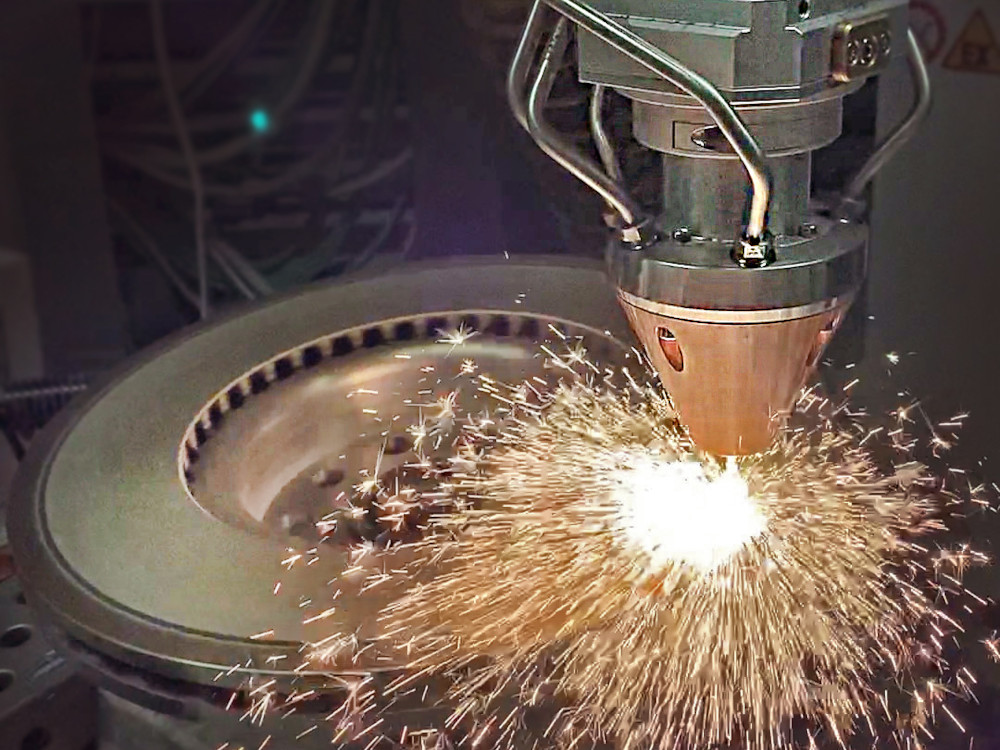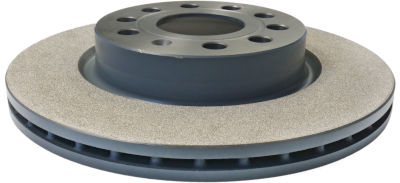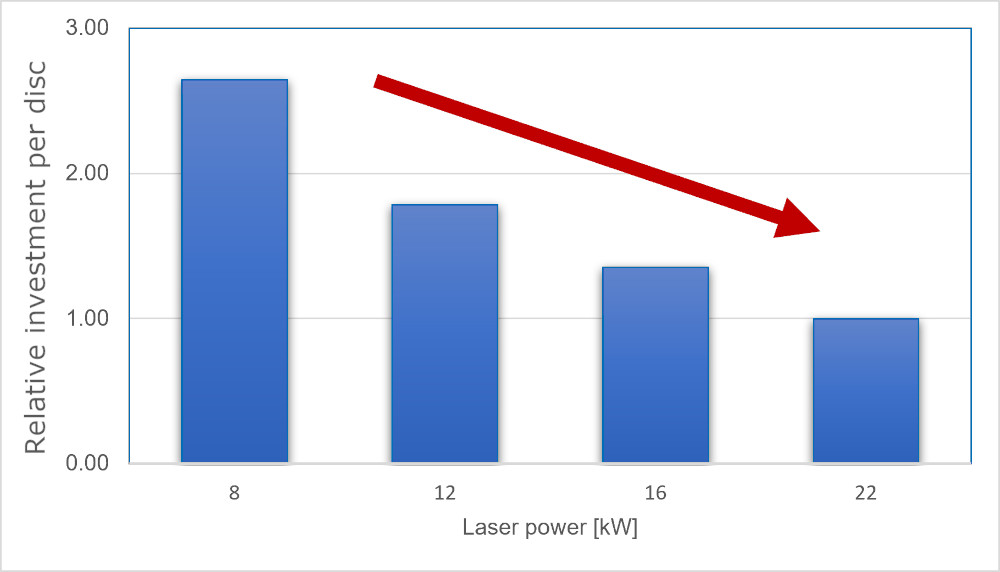
18 Apr Laser coating reduces brake dust according to Euro 7
In the draft of the Euro 7 motor vehicle emission standard, which is due to come into force in 2025, the EU Commission for the first time sets specific limits for particulate emissions from braking systems. They also apply without exception to electric vehicles, which are thus affected for the first time by the EU regulations on pollutant emissions from motor vehicles. Automobile manufacturers are thus faced with the challenge of significantly reducing particulate emissions from braking systems.
Coating reduces break dust
One effective way to reduce brake dust emissions might be to use diode lasers to add hard coatings to automotive brake discs for long-term abrasion and corrosion protection. Laserline says it has developed such a process setup to production readiness together with technology partners. According to experts, this procedure reduces the health-endangering fine dust that is braking process-induced by up to 90 % with particle sizes of no more than 10 µm (PM10). The Euro 7 emission standards, which are expected to be seven milligrams of particulate matter per kilometer, can thus be safely met.
According to Laserline, neither the standard gray cast iron material of the brake discs nor the conventional production processes need to be adapted for the implementation of such coatings, as the finished brake disc is coated in a supplementary production step.

The powder-based laser coating of a brake disc. Image: Laserline
Ready for series production and industry 4.0 environments
According to the partners, during the development of the process, attention was also paid to integration capability in Industry 4.0 production environments. Diode lasers with OPC UA interfaces and up to 22 kW output power are used for powder-based high-speed coating processes, in which the process time per brake disc is said to be less than one minute in some cases.

According to the process developers, the relative investment per coated brake disc decreases with increasing laser power. Image: Laserline
This allows mass production, making brake disc coating affordable for all automotive market segments, emphasize the developers. For example, the flexible use of coating materials means that effective and at the same time cost-effective coatings can also be implemented for vehicles in the medium and lower segments. In addition, the system configuration influences the price. For example, throughput increases as laser power increases, which consequently reduces the number of coating systems, saves production space and significantly lowers the relative investment per disc.
Further information on the coating process
Source and image: www.laserline.com






